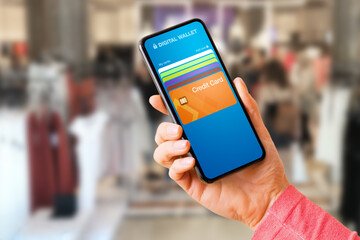As financial transactions grow more digital, digital wallet apps have become an essential aspect of the current payment landscape. If you want to learn how to create a wallet app, you’re entering a market that provides customers with ease, security, and frictionless transactions. In this article, we will walk you through the process of how to create a digital wallet app, from concept to execution, offering great insights and practical advice along the way (by the link, you can find a description of the relevant Topflight Apps’ experience).
Tips on how to create a wallet app
Determine the Purpose and Target Audience of Your Digital Wallet App
When you start to build your own e-wallet, you must first determine its purpose and target audience. Are you aiming for consumers, corporations, or a specific market? Understanding your target audience and clearly defining the objective of your app can help you make educated decisions throughout the development process.

Identify the following core features and functionality
Consider integrating the following basic features in your digital wallet software to ensure its success:
- User Signup and Profile Development: Enable users to register and establish customized profiles, including the ability to link their bank accounts, credit cards, or other payment methods.
- Payment Integration: Connect with numerous payment gateways to allow users to conduct transactions in real-time.
- Peer-to-Peer Payments: When you build a mobile wallet app, don’t forget to provide quick and secure payments between users, allowing friends, family, or colleagues to swap funds easily.
- Transaction History: Give users a full transaction history, including receipts and payment information.
- Security Measures: Incorporate strong security features such as encryption, two-factor authentication, and biometric authentication to secure the safety of user data and transactions.
- Notices & Alerts: Deliver real-time messages and alerts to users for completed transactions, pending payments, or account activity.
- Incorporate loyalty programs and rewards systems to motivate users and increase engagement.
- Create an Intuitive User Interface: User interface design is critical to the success of digital wallet software. Consider the following design principles:
- Develop an intuitive and user-friendly interface that allows people to navigate with ease.
- Use aesthetically appealing visuals, icons, and colors that are consistent with your brand and give a favorable user experience.
- Clear CTAs: Create buttons and prompts that express their purpose clearly, guiding users through the payment process.
- User Experience: Provide a uniform and seamless experience across devices and platforms.
Also Read: Best Cryptocurrency Wallet to Store Crypto
Choose the Appropriate Technology Stack
Choosing the correct technology stack is critical for developing your digital wallet software. Evaluate platform compatibility (iOS, Android, or both), scalability, security, and the competence of the development team. Depending on your needs, technologies like React Native, Flutter, or native app development may be appropriate.
Develop and Test the App
Coding and development are required while creating a digital wallet app. Collaborate with a qualified development team to bring your app to life. Do thorough testing to discover and resolve any bugs or usability issues. To ensure a seamless and reliable user experience, do functional, security, and performance testing.
Put in place Strong Security Measures
Security is critical in the creation of digital wallet apps. Put in place strong security measures to safeguard user data and transactions. To protect sensitive information, use encryption techniques, secure authentication mechanisms, and adhere to industry security standards and regulations.
Obtain the Necessary Regulatory Approvals
Certain restrictions and permissions may be necessary to function as a digital wallet app, depending on your target market and jurisdiction. To ensure a smooth launch and continuous functioning of your app, research and comply with the essential legal and regulatory standards.
Deploy, monitor, and improve your digital wallet app after extensive testing and regulatory compliance. User input, performance indicators, and analytics should all be monitored to discover areas for improvement. Update and improve your app on a regular basis, addressing user problems, introducing new features, and staying ahead of the competition.
Conclusion
Regarding how to create a wallet app, a digital wallet app needs to be carefully planned, designed, developed, and security must be prioritized. You can create an e-wallet app that offers users a seamless, secure, and convenient payment experience by defining the purpose of your app, choosing core features, determining the right technology stack, designing an intuitive user interface, developing and testing the app, obtaining necessary regulatory approvals, and continuously improving your app.






[…] Read More: How to Create a Digital Wallet App: From Concept to Implementation […]